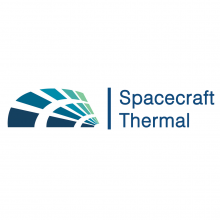Spacecraft Thermal Management
Background:
The environmental conditions experienced by orbiting spacecraft are extreme due to the wide temperature range and vacuum conditions. These environmental variations pose a demanding design constraint on the engineers creating the thermal management systems for spacecraft. Most operating satellites today come equipped with radiators to reject heat from onboard electronics into space. A radiator that rejects heat efficiently into the cold vacuum of space, consequently will absorb radiation as heat very readily when exposed to direct sunlight. These are two key situations in which the satellite radiator must successfully operate.
Goals & Objectives:
The problem occurs when this surface is exposed to direct sunlight; it will readily absorb the Sun’s radiation and transfer it back into the satellite, heating the internal components. Most other satilites minimize this by orienting the radiator to minimize heat gain. However, this adds on sizeable weight and mechanical points of failure. The Variable Emissivity Radiator being researched and designed at UCI provides control to lower the outer surface emissivity during sunlight exposure, and increase it again to dissipate internal heat in cover, all while using minimal power and no moving components. This saves on weight, cost, and complexity for small satilites.
To achieve this, we have many sub teams working in tandem testing samples, designing & fabricating equipment, and improving the sample quality.
Our overall goal is to have a proof of concept prototype ready for demonstration at the end of Spring of 2019. To facilitate that, here are the milestones we set:
Fall 2018:
Code & calibrate the potentiostat
Start electrochromic sample's redox reaction quality control tests
Design a slide holder for more consistent & efficient reactions
Test slide holder redox reaction quality control
Assemble & test the spectrometer
Design a proof of concept prototype VED
Winter 2019:
Produce samples for testing
Test samples via the potentiostat and spectrometer.
Resesign the vacuum test chamber
Manufacture the VED prototype
Spring 2019:
Continue producing and testing samples
Finish the vacuum test chamber
Finish manufacturing and test the VED prototype in a vacuum
_______________________________________________________________________________________________
UPDATE, Winter 2019:
All our Fall milestones have been met!
The vacuum chamber subproject has been put on hold, as we may have access to one we can use for testing in the Spring.
Our ITO slides have improved significantly. They are now more robust and have a larger emissivity change than before.
Advisor:
Dr. Rafique - krafique@uci.edu
Team Contacts:
Trevor Morgan - tamorgan@uci.edu
William Jo - wjo1@uci.edu
Bryan Nguyen - phuchn2@uci.edu



